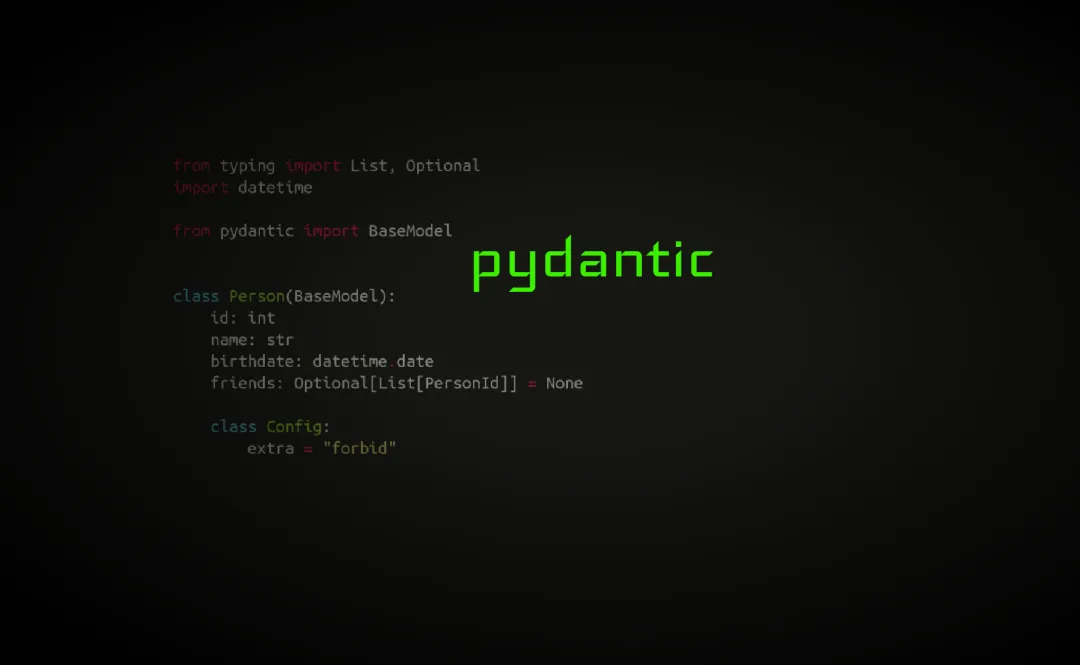PydanticAI:一个基于 Python 的新代理框架,用于构建生产级 LLM 支持的应用程序
01、概述
在AI技术飞速发展的今天,越来越多的应用程序开始依赖大语言模型(LLM)来提供智能化功能。然而,将LLM应用于实际生产环境并非易事。开发者往往会面临如下挑战:
- 模型响应不一致,无法始终保证输出的准确性。
- 缺乏稳健性,在高并发场景下难以保持系统稳定。
- 类型安全性薄弱,导致数据结构不符合预期。
在这种背景下,如何开发一款能够为用户提供可靠、精准且上下文适宜的输出的LLM应用,成为了开发者的首要任务。传统方法在处理这些问题时显得力不从心,尤其是当需要高质量和结构化响应时,开发者往往难以快速扩展解决方案。
今天,我们来聊聊一款专为解决这些痛点而生的全新框架——PydanticAI。
02、什么是PydanticAI?
PydanticAI 是一款基于 Python 的智能代理框架,由著名的 Pydantic 团队开发。它的设计初衷是帮助开发者打造生产级别的LLM应用。PydanticAI 无缝结合了 Pydantic 的强类型校验功能,并且对LLM模型具备高度的灵活性和兼容性。
这意味着开发者可以在不同的LLM之间自由切换,同时享受Pydantic所带来的可靠性和安全性。这种“模型无关性”大大提升了开发效率,尤其是在不断变化的AI生态中,开发者可以灵活选择最佳模型来满足业务需求。

03、PydanticAI 的核心功能
1. 类型安全的响应校验
PydanticAI 最显著的特点之一是其对LLM输出的强类型校验功能。通过 Pydantic,开发者能够确保模型返回的数据结构与预期完全一致。这在生产环境中尤为重要,因为不一致的响应可能会引发系统错误,甚至影响用户体验。
示例:开发者希望LLM返回一个用户信息对象(包括用户名、邮箱和年龄)。PydanticAI 能够自动校验这些字段是否符合预期类型和格式。即使模型偶尔返回错误或缺失数据,框架也能及时捕获并提醒,确保系统运行的可靠性。
2. 支持流式响应
PydanticAI 支持流式响应的生成与验证。这一特性在需要处理高并发请求或大规模数据时尤为关键。例如,实时聊天系统或视频字幕生成工具,能够利用这一功能一边接收数据,一边校验其合法性,从而提升整体性能。
3. Logfire 集成:调试与监控
PydanticAI 与 Logfire 集成,提供调试与监控功能。开发者可以通过 Logfire 轻松追踪系统日志、诊断问题,并快速解决故障。这种高可观测性对于生产级应用尤为重要,因为在实际运行中,任何问题都需要被迅速定位和修复。
4. 模型无关性
PydanticAI 并不依赖于特定的LLM模型。无论是OpenAI的GPT系列、Meta的LLaMA,还是其他开源模型,开发者都可以轻松接入。这种灵活性为不同业务场景提供了更多选择,避免了被某单一技术栈锁定的风险。
04、PydanticAI 为开发者带来的价值
1. 可靠性提升
PydanticAI 的类型校验和结构化响应能力帮助开发者大幅减少运行时错误。无论是小型聊天机器人还是复杂的企业级应用,PydanticAI 都能保证系统输出的一致性和可靠性。
2. 开发效率提高
由于其简洁易用的接口和内置功能,开发者可以专注于核心业务逻辑,而不必花费大量时间在数据验证、错误处理等底层问题上。根据早期用户反馈,PydanticAI 显著缩短了开发周期,让开发者能够更快地将产品推向市场。
3. 迭代速度加快
PydanticAI 提供了一套以评估驱动的开发工具,开发者可以快速对LLM进行微调和测试,从而在产品上线前确保性能达标。框架内置的调试与监控功能,也进一步支持持续优化和高效运维。
4. 降低运维成本
通过 Logfire 的调试和监控,团队可以更快速地识别并解决问题,减少因系统故障导致的停机时间。对于运行在生产环境中的应用,这意味着更高的用户满意度和更低的运营成本。
05、实战案例:PydanticAI 的早期用户反馈
虽然 PydanticAI 还是一款新兴框架,但它已经吸引了不少开发者的关注。根据初期用户反馈,这款框架在处理复杂LLM任务时表现出了出色的简便性和高效性。
- 案例一:某初创公司使用 PydanticAI 开发了一款企业内部聊天机器人,帮助员工快速获取公司政策和信息。通过强类型校验和流式响应功能,这款机器人在处理数千个并发请求时,依旧能够提供精准的回答。
- 案例二:一家大型电商企业利用 PydanticAI 优化了客户服务系统,显著降低了开发时间,并减少了因LLM不一致响应导致的用户投诉。
#使用案例
06、未来展望
随着AI技术的不断进步,像 PydanticAI 这样的工具将在行业中扮演越来越重要的角色。无论是构建一个简单的对话机器人,还是开发一个复杂的智能系统,PydanticAI 都能够为开发者提供强大的支持。
在未来,我们有理由期待更多开发者采纳这款工具,从而推动LLM技术在各行各业的广泛应用。
07、结语
如果你正在寻求一款能够让LLM开发变得更加简单、高效的框架,PydanticAI 无疑是一个值得尝试的选择。它通过类型安全、流式响应支持、调试与监控工具,为开发者提供了从开发到生产的一站式解决方案。
赶紧试试PydanticAI,让你的LLM应用开发如虎添翼!
参考:
本文转载自公众号Halo咯咯 作者:基咯咯
原文链接:https://mp.weixin.qq.com/s/ZQsdR1qHsi0BRjBPcXc4-g


















